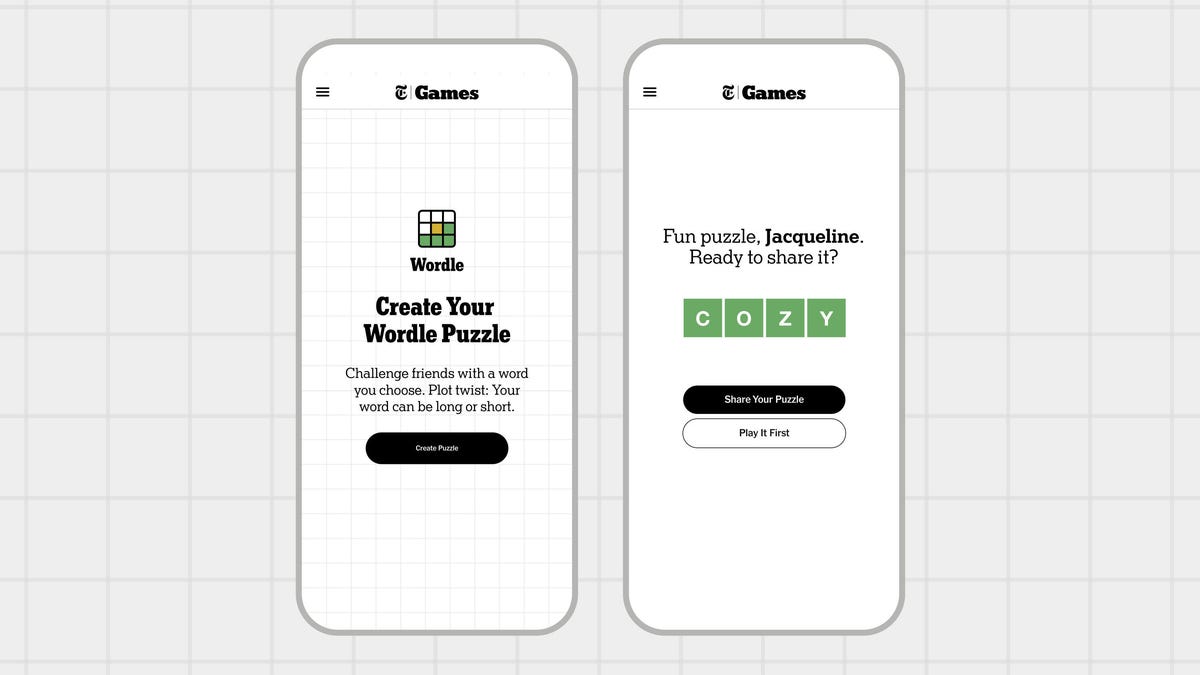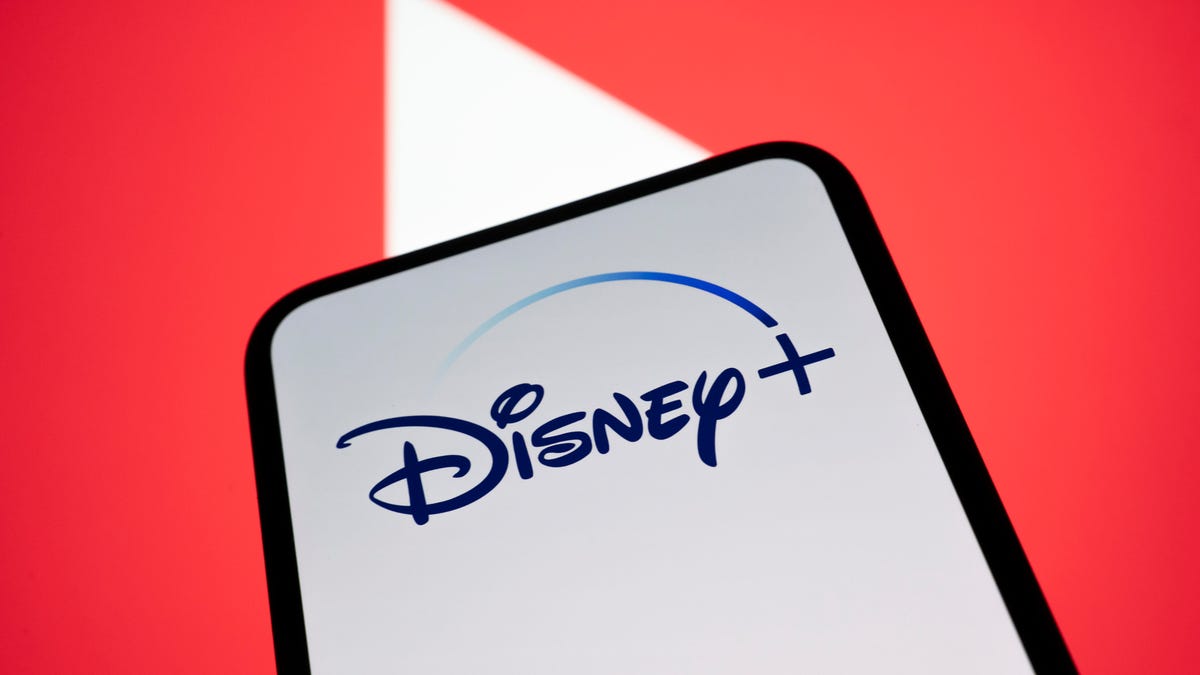Technologies
CNET Survey: 78% of US Shoppers Are Stressing Out Over Back-to-School Tech Purchases
Nearly half are worried about finding quality purchases at an affordable price — adding another strain to school shopping this year.

Back-to-school shopping is underway, and the supply list isn’t like it was when I was a kid.
More schools and colleges are leaning on technology for educational purposes, and some of those costs could fall on US shoppers. Big-ticket purchases, like laptops and tablets, can be a strain on your finances, especially when juggling other back-to-school items and everyday expenses.
CNET’s new back-to-school survey dives into just how much US shoppers are concerned about making tech purchases ahead of the school year starting back. One point is clear: 78% of back-to-school shoppers are worried about affording tech purchases.
Between tight budgets, potential tariff price hikes and the possibility of shortages, buying a new laptop or tablet can be stressful, to say the least. Here are the survey findings and what CNET tech experts recommend when shopping for back-to-school supplies.
Back-to-school shopping is taking a toll on finances
The average US shopper will spend $328.68 on back-to-school shopping. Even though that’s less than last year, it still may be a lot to cover with tighter budgets and higher prices on some supplies compared to last year.
Nearly 1 in 3 are worried about affording tech purchases
Affording tech purchases is one of US shoppers’ top concerns this back-to-school season.
That could be for a few reasons, including tighter budgets and higher-than-expected prices on tech gadgets. Josh Goldman, managing editor and laptop reviewer at CNET, recommends comparison shopping by starting with the everyday price, then looking for sales at your favorite stores and manufacturers. Especially if you’re looking for a computer.
«HP, Dell, Lenovo and others frequently have the best deals and also offer student discounts. You might want to actually give them a call, too, tell them your situation and see what’s possible,» said Goldman.
Goldman and other CNET experts also recommend buying used, refurbished tech from reputable places. Before you buy, see if there’s a rating system to help understand the device’s condition. And check for any return policies and warranties in case you’re not satisfied.
Lastly, Goldman recommends checking with family and friends who may have aging devices that can save you money on a new one. «While it might not meet their needs anymore, it could be just enough for a student,» said Goldman. «Also, if it’s a bit too old even for your student, there’s a chance it can be traded in for a discount on an upgrade.»
Close to 1 in 4 are concerned about unexpected tech fees, too
Beyond buying the hardware, 23% of shoppers are concerned about additional tech fees and subscription costs.
Some learning management systems are free or included in the course, while other apps and services with upgraded features can add up. For example, some educational app subscriptions, maintenance fees and even e-book rentals are required but cost.
To trim that cost, some schools offer special codes or discounts to lower how much you’ll pay. I also recommend checking online student forums for students in higher grades who have completed the course but still have access and for any unused offer codes.
1 in 5 are concerned about managing expenses without credit or BNPL
CNET found that 1 in 5 (20%) are concerned about managing expenses when using credit or Buy Now, Pay Later to afford tech. Yet, juggling expenses and debt can be detrimental to your finances and can lead to interest and fees if you’re unable to pay the statement balance in full and on time.
If you need to lean on financing to cover back-to-school costs, try setting aside any amount you can to help finance less of your school supply list. You may also look for deals to pay less than the sticker price and save money, or hold off on a few purchases for now.
If you have to make a big tech purchase right now, try to cut or hold off on other back-to-school items for now. For example, holding off on shopping for new clothes or reusing some supplies from last year can help cut costs for now.
Back-to-school shoppers are concerned about tech purchases
Gone are the days of only needing pencils, pens and paper. More schools are using technology for educational purposes. Now, there’s a need for laptops, tablets and headphones. And the price tag of these big-ticket items is a concern for shoppers. Here’s a closer look at shoppers’ top concerns.
Nearly half of shoppers are worried about tariffs and rising prices
Which products will be impacted by tariffs has been a hot topic for months now. Earlier this summer, CNET found that 64% of shoppers are rushing to buy tech to dodge price spikes and shortages. It’s a fair concern considering some tech companies, including Microsoft and Acer, have stated that tariffs will push prices on tech higher.
By the numbers, nearly half of back-to-school shoppers (46%) are concerned about rising prices and tariffs. We haven’t seen the impact yet due to the reciprocal tariff agreement pause, and tariffs don’t change prices for items in stock overnight.
But if more tariffs go into effect, price hikes are likely at some point. Therefore, if you know you’ll need a laptop for the upcoming school year and you’re worried about costs going up, Goldman recommends buying one sooner rather than later if you can. On the other hand, if you can wait until holiday sales in the fall, you still may be able to score a good deal depending on the impact of tariffs and US product availability, Goldman added.
Half of shoppers are worried about finding quality, affordable tech
Besides being able to afford tech, half of shoppers are concerned about finding quality technology at an affordable price. Buying the lowest-priced laptop or tablet may not be worthwhile if you’ll pay more in repairs. That’s another reason why our experts recommend shopping for high-quality second-hand tech.
«Woot.com is a good place to find reconditioned laptops and school tech,» said James Bricknell, CNET’s senior shopping editor. «You don’t always need brand-new tech for school, as the latest processor and graphics card aren’t really needed for the average school classroom.»
Our editors also recommend the Amazon Renewed Store, Apple Certified Refurbished and eBay Refurbished as a few trusted retailers for secondhand tech.
Other ways to save on back-to-school tech this year
Here are a few other ways CNET experts say you can save money on must-have tech this back-to-school season.
Shop deals and sales
Some states have tax-free weekends to help you save money by excluding tax on select items for a few days. Coupling this weekend with sales and deals can help you save money on your shopping list.
Bricknell pointed out that even though big sale events, like Prime Day, are great times to get deals on tech before school starts, you may be able to score savings around Black Friday if you’re able to wait until later this year.
Track prices
CNET’s experts are still tracking plenty of tech deals to scout out the real savings based on their recommendations, but no matter how sweet the savings may seem, CNET senior editor and computer expert, Matt Elliott, recommends being patient and tracking prices.
«Be patient and track the price of a product and then do what stock traders do and ‘buy the dip.’ Online retailers are constantly rotating discounts, so it pays to wait for a sale price to land on the product you are looking to buy,» said Elliott.
Elliott added that you’ll see the price fluctuate over a few weeks, so you’ll get a sense of when to buy quickly. Some websites and browser extensions can help you track prices, too — like Keepa and CamelCamelCamel.
There may be other options if a tech must-have isn’t within your budget. Bricknell recommends checking with your school for programs to still get what you need at a fraction of the cost or for free, in some circumstances. For example, some schools may loan laptops for a school year or semester, but eligibility requirements may apply.
Trade in old devices
If you have old tech that you’re no longer using, it may be worth some money that you can use to buy a laptop or tablet you need now.
«Companies like Swappa can give you cash for your old tech, but keep in mind that the more used your tech, the less cash you’re likely to get,» said Bricknell.
Before you sell your old devices, check several retailers to make sure you’re getting the best deal before selling. How much you get back can depend on the condition of your device, how old it is and the demand for it.
Methodology
CNET commissioned YouGov Plc to conduct the survey. All figures, unless otherwise stated, are from YouGov Plc. Total sample size was 2,601 adults, of whom 689 have gone or are planning to go back-to-school shopping. Fieldwork was undertaken July 16 to 18, 2025. The survey was carried out online. The figures have been weighted and are representative of all US adults (aged 18-plus).
Technologies
How to Make and Share Your Very Own Wordle Puzzles
Wordle obsessives, you can now make personal inside joke puzzles to send them to friends.

Wordle’s an immensely popular word game (we post the answers daily) from The New York Times, but it’s not the most personal game in the world. Answers such as GUISE and PERIL are tricky, but generic. Now, Wordle fans who have dreamed of making their own puzzles can test their friends and family by creating their own Wordle creations up to seven letters in length.
Here’s how to do it.
Don’t miss any of our unbiased tech content and lab-based reviews. Add CNET as a preferred Google source.
- No surprise, you have to be a New York Times Games or All Access Subscriber to use this feature. If you are, you’ll find the Create a Puzzle option available from the top menu above today’s Wordle.
- Enter a word, and the site will tell you if it is available. Real Wordle limits you to five-letter words, but the puzzle-making feature lets you choose words between four and seven letters.
- The usual dictionary rules apply, and so curse words, some pet names and obscure inside jokes are essentially out. If your cat is named TANGO, that’s there, but RINGO is not an option. You can drop a proposal with a single word like MARRY, but MARRYME will be rejected, since that’s two separate words.
- Word chosen, you can then fill out your name and add an optional hint, and the feature will generate your puzzle with a link you can send around. Unlike standard puzzles, your puzzle doesn’t appear to reset after a day, so whoever you send it to doesn’t need to rush to solve it.
While you must be a subscriber to create your own personalized puzzle, you can share it with anyone — they only need the link, not a subscription, to complete your Wordle.
Looking for the most recent Wordle answer? Click here for today’s Wordle hints, as well as our daily answers and hints for The New York Times Mini Crossword, Connections, Connections: Sports Edition and Strands puzzles.
Technologies
Today’s NYT Mini Crossword Answers for Saturday, Nov. 15
Here are the answers for The New York Times Mini Crossword for Nov. 15.

Looking for the most recent Mini Crossword answer? Click here for today’s Mini Crossword hints, as well as our daily answers and hints for The New York Times Wordle, Strands, Connections and Connections: Sports Edition puzzles.
Need some help with today’s Mini Crossword? The Saturday puzzle is always the longest of the week, so it’s not quite as easy as the other days. Today’s wasn’t too terrible. Read on for the answers. And if you could use some hints and guidance for daily solving, check out our Mini Crossword tips.
If you’re looking for today’s Wordle, Connections, Connections: Sports Edition and Strands answers, you can visit CNET’s NYT puzzle hints page.
Read more: Tips and Tricks for Solving The New York Times Mini Crossword
Let’s get to those Mini Crossword clues and answers.
Mini across clues and answers
1A clue: Theatrical role
Answer: PART
5A clue: Capital of Vietnam
Answer: HANOI
6A clue: Father of a «fur baby»
Answer: CATDAD
7A clue: Words often accompanied by a ring
Answer: MARRYME
8A clue: Whirling currents
Answer: EDDIES
9A clue: Put up, as a statue
Answer: ERECT
10A clue: Race that’s about half the length of a half-marathon
Answer: TENK
Mini down clues and answers
1D clue: SpongeBob’s starfish friend
Answer: PATRICK
2D clue: Despite it all …»
Answer: ANDYET
3D clue: Wanders here and there
Answer: ROAMS
4D clue: Company with a «To Go» stain remover
Answer: TIDE
5D clue: Become firm
Answer: HARDEN
6D clue: Small group of soldiers
Answer: CADRE
7D clue: What parallel lines never do
Answer: MEET
Technologies
Touchdown! Disney, ESPN and Other Channels Are Back on YouTube TV
YouTube TV subscribers no longer need another streaming service — or to visit a sports bar — to watch the NFL or college football.

YouTube TV subscribers, your channels — and your football — are back. Disney and YouTube said Friday night that the two companies had reached an agreement. YouTube TV subscribers lost all of Disney’s channels, including ESPN and ESPN2, on Oct. 30. Those who wanted to watch NFL or college football on ABC, ESPN or ESPN2 or Disney family-friendly hits such as Bluey, had to find other alternatives.
«We’re happy to share that we’ve reached an agreement with Disney that preserves the value of our service for our subscribers and future flexibility in our offers,» a YouTube spokesperson said. «Subscribers should see channels including ABC, ESPN and FX returning to their service over the course of the day, as well as any recordings that were previously in their Library. We apologize for the disruption and appreciate our subscribers’ patience as we negotiated on their behalf. «
Don’t miss any of our unbiased tech content and lab-based reviews. Add CNET as a preferred Google source.
The companies said in a statement that they reached a multi-year deal and were already restoring the channels to YouTube TV.
According to YouTube, subscribers should see content and saved recordings restored over the next 24 hours. So if you don’t have them back yet, they should show up soon.
I’m a YouTube TV subscriber myself, and as of 5:30 p.m. PT on Friday, Disney, ESPN and other channels have been restored for me. As a die-hard Minnesota Vikings fan (yes, I know), I added Fubo TV temporarily, but I won’t be keeping that subscription.
According to the statement, the deal will include the restoration of the channels, plus other items. The unlimited version of ESPN’s new direct-to-consumer service will now be made available at no additional cost to YouTube TV subscribers. Subscribers will also have access to a selection of live and on-demand programming from ESPN Unlimited inside YouTube TV. Also, select networks will be included in various genre-specific packages, and there will be the ability to include the Disney Plus Hulu Bundle as part of select YouTube offerings.
«This new agreement reflects our continued commitment to delivering exceptional entertainment and evolving with how audiences choose to watch,» Disney Entertainment Co-Chairmen Alan Bergman and Dana Walden and ESPN Chairman Jimmy Pitaro said in the statement. «It recognizes the tremendous value of Disney’s programming and provides YouTube TV subscribers with more flexibility and choice. We are pleased that our networks have been restored in time for fans to enjoy the many great programming options this weekend, including college football.»
Disney-owned channels were pulled on Oct. 30 when the agreement between the two companies expired.
According to The Hollywood Reporter, the resulting 25-day blackout was the longest in recent memory for Disney.
Here’s a full list of the channels that were removed due to the dispute:
- ABC
- ABC News Live
- ACC Network
- Baby TV Español (Spanish Plan)
- Disney Channel
- Disney Junior
- Disney XD
- ESPN
- ESPN Deportes (Spanish Plan)
- ESPNews
- ESPNU
- ESPN2
- Freeform
- FX
- FXM
- FXX
- Localish
- Nat Geo
- Nat Geo Mundo (Spanish Plan)
- Nat Geo Wild
- SEC Network
-

 Technologies3 года ago
Technologies3 года agoTech Companies Need to Be Held Accountable for Security, Experts Say
-

 Technologies3 года ago
Technologies3 года agoBest Handheld Game Console in 2023
-

 Technologies3 года ago
Technologies3 года agoTighten Up Your VR Game With the Best Head Straps for Quest 2
-

 Technologies4 года ago
Technologies4 года agoBlack Friday 2021: The best deals on TVs, headphones, kitchenware, and more
-

 Technologies4 года ago
Technologies4 года agoVerum, Wickr and Threema: next generation secured messengers
-

 Technologies4 года ago
Technologies4 года agoGoogle to require vaccinations as Silicon Valley rethinks return-to-office policies
-

 Technologies4 года ago
Technologies4 года agoOlivia Harlan Dekker for Verum Messenger
-

 Technologies4 года ago
Technologies4 года agoiPhone 13 event: How to watch Apple’s big announcement tomorrow
